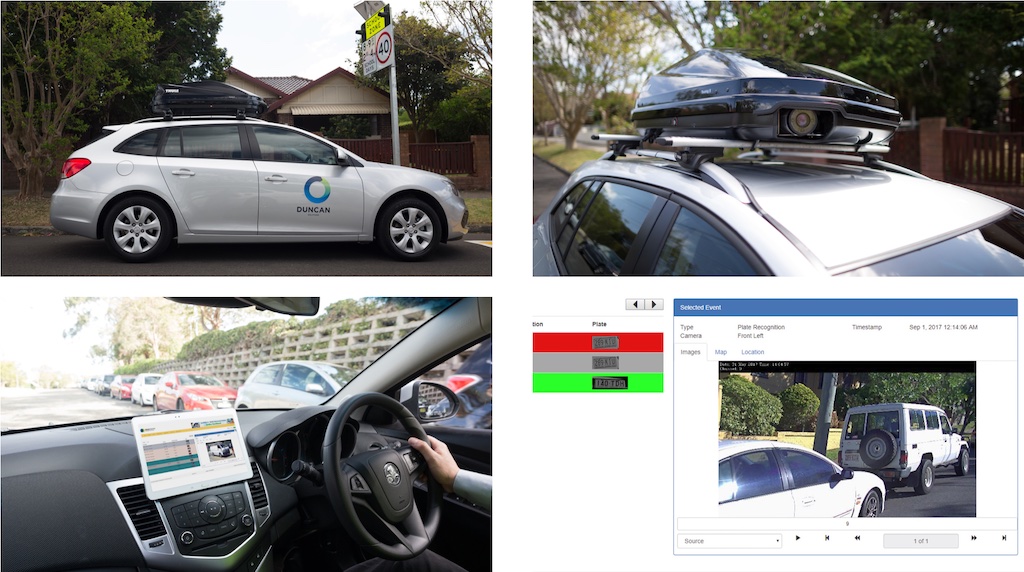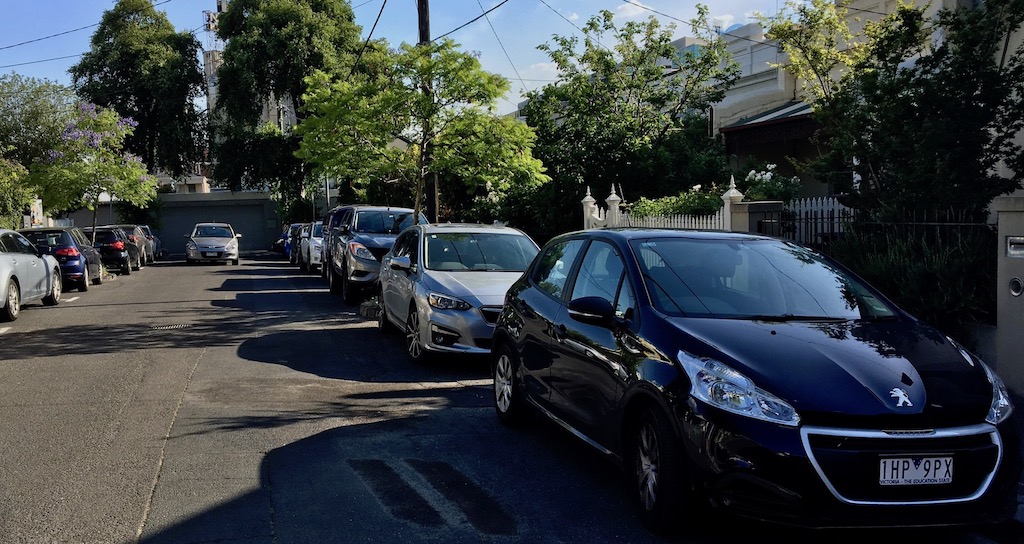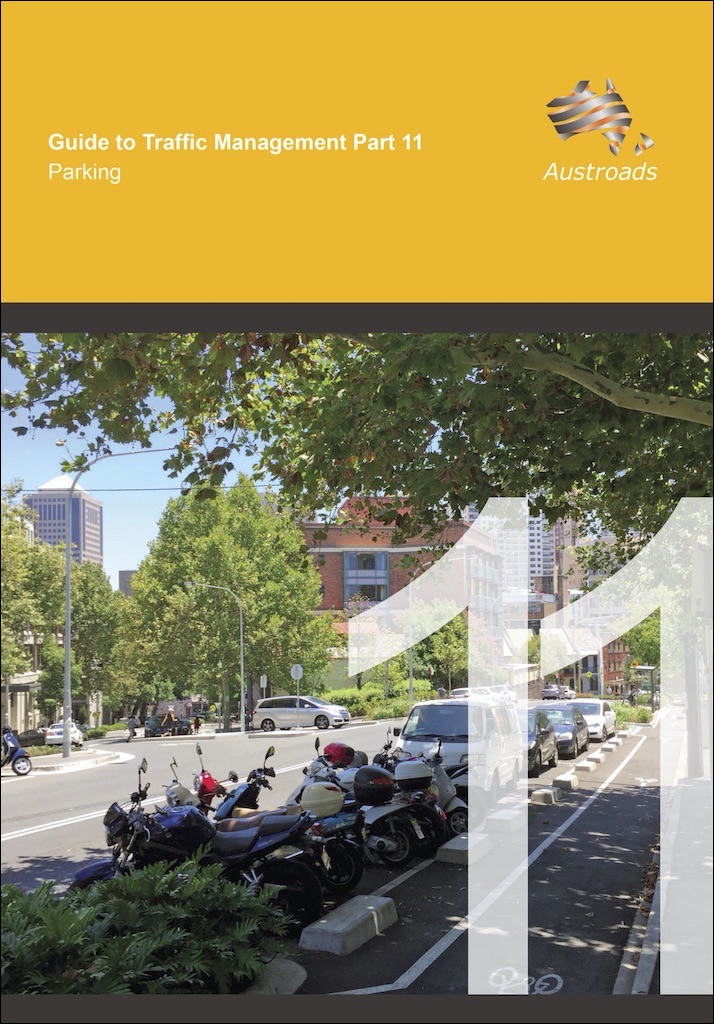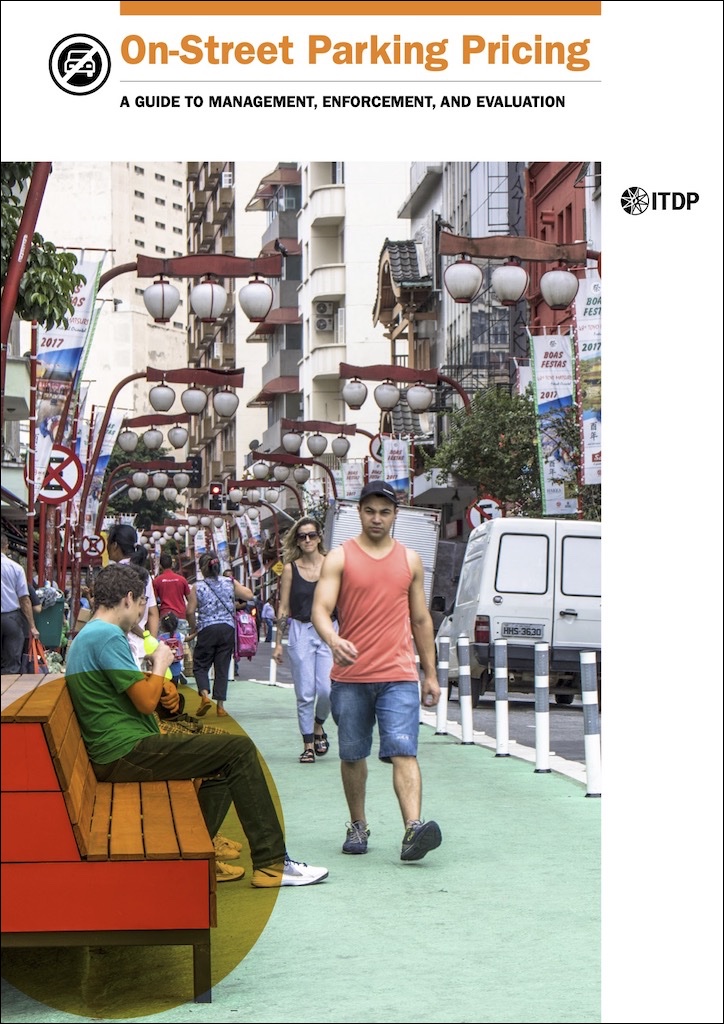How can we ensure a park is usually available?
We all want to get around Yarra safely, so we can visit friends, the library, shops or services. Some people need to drive, and these people should be able to find a park near their destination. The problem is that Yarra’s parking bays, even those with time restrictions, are often fully occupied all day, because most parking bays are offered for free, and people go out to change the position of their car every two or four hours.

Yarra policy
Yarra’s Parking Management Strategy, the Climate Emergency Plan, and the Transport Strategy all state that all visitors should pay for parking; the reality is that this doesn’t happen.
Require visitors to the City of Yarra to contribute to the cost of providing and maintaining the parking infrastructure they use by paying for parking
Parking Management Strategy
Develop a Parking Management Plan…apply user-pays principles and remove incentives that preference car use and ownership…Develop a model for Council’s parking revenue that’s financially and environmentally sustainable.
Action 4.3 from Climate Emergency Plan
Car parking revenue and a user-pays model provides essential funding on a consistent basis that provides alternatives to car travel for everyone…parking management approaches that actively discourage non-essential car ownership and car travel, while also continuing to provide convenient parking for those who need it…Parking management approaches should not encourage people to shuttle a car between different parking spaces in the same area all day.
Transport Strategy
What Yarra can do – sell digital permits
Yarra can change from free parking to paid parking, using digital permits sold via smartphone apps, with permits linked to the vehicle’s number plate. Even small parking fees can encourage drivers to promptly vacate the parking bay once their visit has concluded, or encourage commuters to travel by public transport.

How it would work
Parking signs would change to ‘Permit Zone / Pay by App’. Different permit zones can support different pricing structures. For example, permit zones to support shoppers are located near shopping streets, while permit zones to support residents cover the remaining area of each neighbourhood.
In shopping zones, digital parking permits can be free for the first hour (to support traders) before transitioning to demand responsive pricing (to discourage commuters from parking all day). Payment is made via an app, with drivers ‘checking in’ and ‘checking out’ from the parking bay. The app would automatically deduct a fee if the driver stays longer than one hour. Before they ‘check in’, drivers can review the hourly pricing that applies for the remainder of that day. At times when demand and occupancy are low, e.g. late at night, then parking can be free for many hours.
In residential zones, digital parking permits can be free for the first two hours (to support visitors, just like a 2P zone) before transitioning to hourly pricing with a daily cap. Residents and businesses can continue to use their annual permits. To prevent commuters from occupying all the bays, the number of daily permits sold in each zone is capped, and the daily price cap for that zone is increased until daily sales are just under the quantity cap.
Visitor permits
If a resident has a visitor who needs to stay for longer than two hours, then residents can offer their guests a free digital daily visitor permit. To prevent households from selling their visitor permits to commuters, the fee applicable to each household can gradually escalate, before resetting at the end of the calendar year, e.g.:
- The first 10 daily permits purchased within a calendar year are free
- The next 10 daily permits are $2 each
- The next 10 daily permits are $4 each, etc, escalating upwards to the ceiling price for that zone
- Reset back to free on 1st January
Enforcement
With digital parking permits, each permit is linked to a vehicle’s number plate. Enforcement is conducted using smartphones installed with an app for automatic number plate recognition. Enforcement officers can simply scan a number plate to determine whether the vehicle has a valid permit or not. Even better, cameras can be fitted to vehicles so that number plates can be automatically scanned as enforcement officers drive along a street. In this manner, fewer officers can check more streets more often, compared with the traditional ‘walk and chalk tyres’ method.

If streets in residential zones are full
If streets in residential zones are full, e.g. at the end of the day when people are returning home, then the demand from residents needs to be managed. Options include:
- Remove eligibility for any ‘3rd permits’.
- Remove eligibility for a ‘2nd permit’, if a property has a crossover (which reduces the available parking on the street).
- Reduce demand by increasing the price.

Council identified that parking permits would become more valuable with time, back in 2003 when council blocked subdivisions from being eligible for on-street parking permits.

Higher priced residential permits would still be comparable with the cost of residential parking permits in high demand areas in other cities such as Miami Beach, Vancouver, Portland or Amsterdam, which range from AU$351 to AU$884:

Summary
We can ensure that a park is usually available (and that a fine can be avoided) by:
- Converting on-street parking bays from free (unrestricted or time restricted) to paid (Permit Zone)
- Converting ‘paper’ and ‘sticker’ permits to digital permits, linked to vehicle’s number plate
- Selling digital permits via smartphone apps
- Using demand responsive pricing
Benefits
These reforms would deliver the following benefits:
- Shoppers would be able to find a park near shopping streets, and avoid a fine
- Residents would benefit from expanded permit only zones, protecting them from commuters who look for free parking
- Residents would benefit from being able to offer a visitor permit to multiple guests at the same time, e.g. for a family dinner party
- Residents wouldn’t have to remove their physical ‘sticker’ permit from their windscreen each year and apply the new one
- Commuters would be able to purchase a daily parking permit (subject to a daily cap on quantity for each zone)
- Council would benefit from not having to send out physical ‘paper’ or ‘sticker’ permits each year
- Ratepayers would benefit from increased council parking enforcement effectiveness and reduced parking enforcement costs
- Ratepayers would benefit from increased revenue, which should be reinvested directly back into the neighbourhood that generated the revenue, for trees, place making, wider footpaths, better footpath paving, pedestrian crossings, pocket parks, etc.
Guidance from experts
Guidance from the Institute for Transportation & Development Policy, via their free guide to the pricing of on-street parking, aligns with our proposals for reform:
Guidance from Austroads
Guidance from Austroads also aligns with our proposals for reform:
Drivers cannot expect long-term free parking close to their destination.
–
There are environmental aesthetic and financial costs associated with unlimited supply of parking.
–
The user pay principle is fair and applies to most services and products as well as to every other cost associated with owning and using a motor vehicle.
–
Pay parking increases equity by charging users (user pay) for their parking costs and by reducing the parking costs imposed on non-drivers. Paying directly rather than indirectly benefits consumers because it reduces parking and traffic problems and allows individuals to decide how much parking to purchase giving them an opportunity to save money. Drivers may use a space as long as they want, as long as they are prepared to pay for it.
Austroads Guide to Traffic Management Part 11 Parking

Local champion
Your local champion for parking is David Balding – Yarra resident. View all of Streets Alive Yarra’s champions on our supporters page.

Parking is a big issue for green and lively streets and a vital public realm. Our instincts to want more of it and cheaper lead to bad outcomes – the big subsidy has a distorting effect on undermining public transport, discouraging walking and cycling because of traffic congestion, more toxic pollution and less space available for greenery and public social spaces. This is one area where we need a big dose of the free market: councils should not be trying to put private parking providers out of business, or undermining the business model of car sharing and taxi providers by taking away customers through under-price parking. Fair-price parking is good for those who need parking because it will nudge many to try alternatives such as car sharing, creating more spaces for those who really need them. There is an equity issue as well: the current free/cheap parking on Yarra streets represents a huge subsidy to about half the residents, with many of those missing out on this hand-out being among the least well off. Rates are too high because council fails to price parking fairly. If you want vibrant Yarra streets with flourishing businesses and a fairer society, help us campaign for a fair price for parking in the public realm.
David Balding

